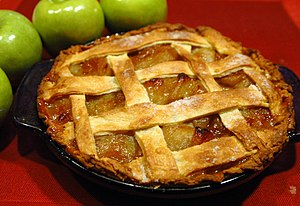The chorus is what many songwriters and publishers and industry types consider one of the most critical parts of the song. As described in my other article on Song Structure, each part of a song has its purpose, and the chorus seems to be one that is most crucial in driving the whole song “home”. In this article I’m going to go into more detail about the functions of a chorus, using some familiar examples to give you an idea of how you might best construct your chorus when you get to that part of the song.
Well, let’s face it…probably more often than not, a song doesn’t “write itself” in any particular order. You may often find that you come up with some parts and don’t really know what their purpose is right away. In fact, you may even change your mind as to which is which at some point in your re-writing process, and that is perfectly fine. If you are at that point right now with a particular song you’re working on, there are some things to consider. First of all, the chorus is a stand out both lyrically and musically. It’s the part, or at least CONTAINS the part (often called the “hook”) that people remember. So look at what you’ve got and see if one part has that more dominant feeling. Maybe it’s not so obvious, in which case you may have to rework a part to achieve that…or you may not have a chorus yet, or even end up with one. Anything’s possible!
I’ve used this example before as a powerful chorus…Sheryl Crow’s “If It Makes You Happy“. There is NO DOUBT about that chorus, even when you just read the title of the song. Not all song titles are contained in the chorus, but this is fairly common. The contrast between that chorus and the verses is very obvious. Musically, it lifts up as the melody hits the highest note on “MAKES”. The melody line is simpler in the chorus, and more powerful. The chord progression jumps to a minor chord, an “Am”, whereas the verses stick to more major chords. Lyrically, it’s a great line. “If it makes you happy”….I wouldn’t be surprised if the whole song was written around that line.
Okay, here’s another one: “I Will Always Love You”. The song was written by Dolly Parton, who also recorded a version of it, but it was made even more famous by Whitney Houston. Now, this is not my favourite song or chorus because personally, it got kind of annoying after awhile. But you have to admit, with all of those vocal acrobatics, that was one darn powerful chorus. And what’s really interesting is that this is the only phrase in the chorus…I will always love you. That was it! The rest of it was the performance.
Here’s another…Joan Osborne’s “One Of Us”. What if God was one of us? Not only is it lyrically provocative, but the melody, which is mirrored with a guitar lick, is a real stand out. And which is the the first word in that chorus that contains the highest note? You’ve got it…”God.” 🙂 Either that’s really clever or a wonderful accident!
A great country song that came out in 2000 was by Lonestar…”Amazed”. Very powerful, emotional chorus. “I don’t know how you do what you do, I’m so in love with you, it just keeps getting better.” Now the lyrics are not particulary clever, but the melody and emotional deliverance in the performance are a real stand out.
U2‘s “Beautiful Day” from the same year had a really positive message. If you have no idea what the rest of the song is about (and I didn’t until I looked it up!), “it’s a beautiful day…” is all you need! Again, the production is very powerful as is the vocal delivery, but the phrase itself and the melody that accompanies it, is emotionally very uplifting.
Okay…I’m not going to name the next one…here are the lyrics in the chorus:
I get knocked down
But I get up again
You’re never going to
Keep me down
Do you recognize it? Oddly enough, here’s an example of a chorus with no sign of the title. It’s called “Tubthumping” by Chumbawumba. Who thought of that title? But it sure is a stand out chorus. Can you remember the rest of the song? Unless you listened to the song a number of times, the verses probably aren’t as memorable. Now you see what I mean about the chorus being a critical aspect of the song! If it’s well-written, it goes a long way to sell the song.
And finally, a more recent entry:
Oh, it’s what you do to me, oh, it’s what you do to me
Oh, it’s what you do to me, what you do to me
Again, no title in the chorus…it’s called “Hey There Delilah”. Very strong chorus, not particularly fascinating lyrics, but melodically, it’s very powerful and emotional. It’s interesting that each of the verses begins with “Hey there, Delilah…”, so that’s another way to make the title memorable without putting it in the chorus. Probably, using “What You Do To Me”, which is repeated over and over in the chorus, was considered too over-used or boring to use as a title.
Now these songs might not be your taste, and to tell you the truth, I know some of them only by the fact that my guitar students wanted to learn them! If it weren’t for my students I wouldn’t be exposed to a lot of music. Sometimes they are not songs that I myself would choose to listen to, but it sure gives me an insight into what is popular.
The title of this article comes from a well-known phrase in the music industry. When you are sitting in front of a record label exec or a publisher, this is often what is on their mind. It says a lot about what the industry thinks about. They don’t care about long intros and meandering verses…quite often, all they care about is the chorus. So the placement of your chorus is particularly important. On the other hand, if your verses really draw them in, the chorus becomes the bonus!
In a lot of songs, the chorus is the very first thing you hear. Is that a good trick? Well, it might be effective, but not every song works with that particular form…for one thing, the verses can be really effective in lyrically setting up the chorus, so in that case, you don’t want to put the chorus first and give the whole thing away! The purpose of a chorus, as I said in the beginning, is to drive the song home. It is the focal point, the summation…it explains the song. And sometimes, in the case of a chorus being the first thing you hear, the chorus is what sets everything else in the song up.
There are songs that don’t have choruses, but that isn’t as common in popular music genres such as rock and pop and country. In some cases, you have a song with a “refrain“, which might be a line or a phrase that recurrs in the same spot in a verse. For instance, “The Times They Are A Changin'” is an old Bob Dylan song that uses that refrain at the end of each verse. Folk songs, for instance, often don’t have a chorus. But if you are writing in the more popular styles, you are more likely than not going to have to write a chorus.
Studying the chorus’ of the songs you like is an excellent lesson in how they work, and more importantly, how they work successfully. Go to a Top 10 list of songs in any given year, and then listen to and read along with the lyrics of each one. Notice how the chorus is used, and decide for yourself what it is about that chorus that works for you. Where is the placement of the chorus? How many times is it repeated? How long is it? How is the melody structured? What do the lyrics say in the chorus that isn’t said in the rest of the song?
The more you study them, the more you’ll admire the power of a great chorus!
![Reblog this post [with Zemanta]](http://img.zemanta.com/reblog_e.png?x-id=300b5b6f-bef1-43b7-92d6-f4e2fb2e1156)

![Reblog this post [with Zemanta]](http://img.zemanta.com/reblog_e.png?x-id=f91d3ef7-00fe-4c2e-bb4b-aeba3ac2ad1f)

![Reblog this post [with Zemanta]](http://img.zemanta.com/reblog_e.png?x-id=44f00a5a-8d9e-4430-92b8-0f6f22b0030f)

![Reblog this post [with Zemanta]](http://img.zemanta.com/reblog_e.png?x-id=1f737b2e-0d0b-4e0b-82aa-9e6cdb1ebd03)

![Reblog this post [with Zemanta]](http://img.zemanta.com/reblog_e.png?x-id=0844acb3-67fd-418f-8b43-f3d0b3f364df)